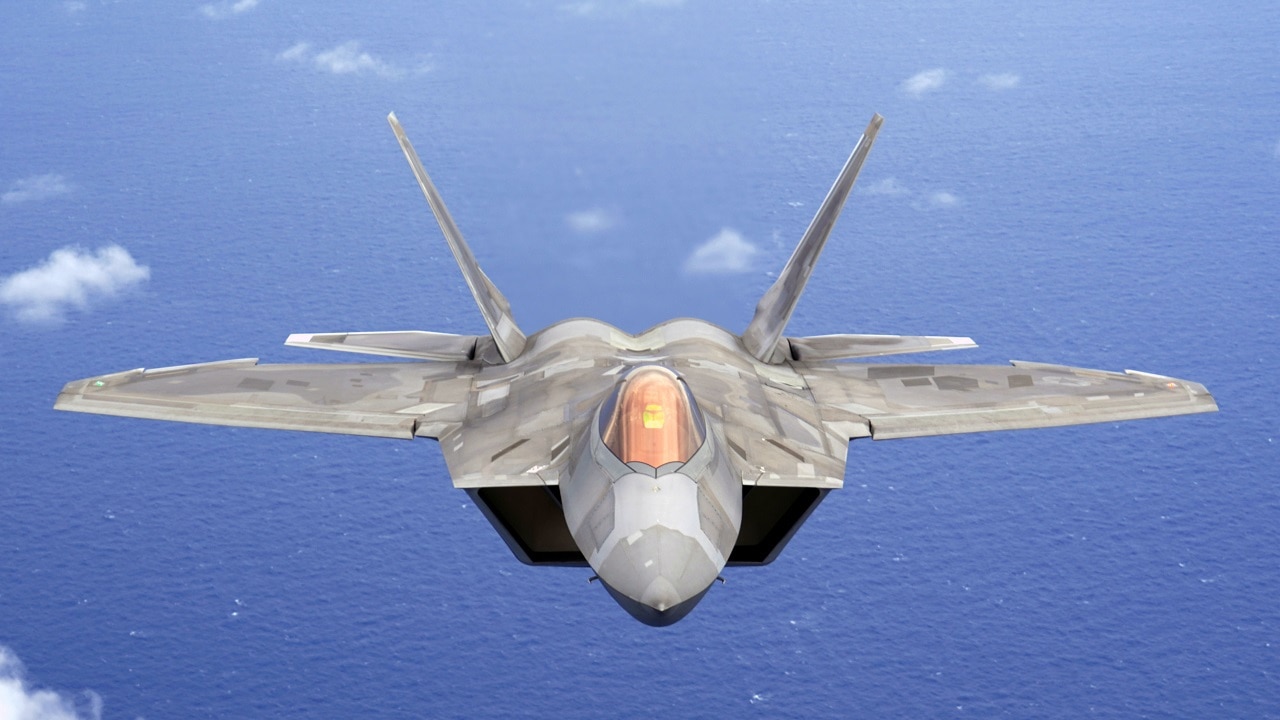Earlier this month, many Americans saw more than usual in the sky and the stars. When they looked up, they saw something looking back at them: a spy balloon from the People’s Republic of China (PRC).
(Subscribe to 19FortyFive‘s New YouTube Channel here.)
Over the course of seven days, the balloon sailed from Alaska’s Aleutian Islands to the coast of South Carolina, where it was intercepted and destroyed by an F-22 fighter jet. The balloon left political wreckage in its wake: Secretary of State Antony Blinken postponed his much-anticipated trip to China; both Republicans and Democrats in Congress blasted the Biden administration for its delayed response, and Beijing hurled a flurry of insults at Washington. It amounted to a stark moment of weakness for the United States.
To be sure, the Pentagon claims to have taken every precaution to prevent intelligence collection and ensure the safety of civilians. That’s all well and good, but reporting from Bloomberg suggests that the Biden administration opened American airspace to a hostile intruder primarily because they wanted to protect Blinken’s meeting with Chinese General Secretary Xi Jinping. In the end, however, the United States got nothing out of the ordeal, and the Chinese Communist Party (CCP) successfully baited Americans into foolishly chasing a balloon for seven days.
This will happen again. Chinese spy balloons have apparently transgressed American airspace on several occasions in the past six years, as well as doing so in parts of Latin America and over Taiwan. Whether the next episode occurs in the air, on land, or at sea, the message is clear: the CCP is testing the resolve of America to defend its own sovereignty. As a result, next time, the United States needs to commit to eliminating any threat to our airspace. But simply saying so isn’t enough. Xi needs to credibly believe that we would shoot the next balloon down. Based on the PRC’s recent behavior, he currently doesn’t.
How did we get here? Much of the answer lies in the transformation of Chinese foreign policy that has taken place over the past decade under Xi’s guidance. Beginning in 2013, Beijing began pushing boundaries with its neighbors, both literally and figuratively. In doing so, it was seeking to answer a simple question: could it bully Hanoi, Manila, Kuala Lumpur, and other regional capitals into accepting Chinese sovereignty over the South China Sea?
Between the construction of man-made islands and the emplacement of provocative missile batteries, the CCP’s gambit worked. When then-House Speaker Nancy Pelosi traveled to Taiwan last year, the Pentagon plane transporting her delegation purposefully avoided international airspace above the South China Sea—a de facto recognition of Beijing’s creeping expansionism. Consider also the PRC’s invasive land settlements in Bhutan, and ongoing border clashes with India—not to mention Xi’s regularly-articulated designs to subsume Taiwan.
When it comes to the United States, the situation is a bit different. The CCP is not testing American airspace because they want to invade U.S. homeland. Rather, it is doing so in order to expose the United States as inept and weak. From this perspective, the balloon is ancillary to the bigger problem of CCP expansionism in the Indo-Pacific. Washington needs to be ready for the next episode, and to reestablish deterrence, not only for our airspace but for the territorial integrity of our friends, allies, and partners as well.
Deterrence is the art of coercing an adversary’s behavior, forcing them to begrudgingly cooperate “under duress,” as former Pentagon official Keith Payne has put it. By this measure, the Biden administration’s response fell significantly short. After all, delaying Blinken’s trip hurts Biden more than it does Xi, who was apparently willing to risk the conference with an inflatable stunt. That’s not deterrence for Beijing; it’s delayed gratification for Washington—and it encourages a repeat incident. What, then, would real deterrence look like in this context?
At its core, deterrence rests on fear. Cold War theorist Thomas Schelling called deterrence “the power to hurt” that depends on knowing “what an adversary treasures and what scares him.” What does the CCP value, and what is it afraid of losing? Beijing’s behavior in its near-abroad answers both questions: the Party is angling to expand China’s borders as part of “the great rejuvenation of the Chinese nation.” Even a perception of failure or weakness could weaken the CCP’s hold over its most prized possession: its monopoly of power inside China itself. The task for America, then, becomes clear: Washington needs to convince Xi that any regional aggression will have a presumption of failure instead of success.
For starters, the State Department must take an interest in the CCP’s quiet invasion of Bhutan and make it an international issue. The next time PLA forces attack Indian soldiers, Washington should respond by sanctioning the China-Pakistan Economic Corridor, the crown jewel of Beijing’s famous Belt and Road Initiative, which threatens India’s security in its northern territories and the Arabian Sea. And in the South China Sea, the United States military should stand fast regarding the legitimacy of its presence in what are recognized (by everyone except Beijing) as international airspace and waters.
Moreover, the Biden administration should announce these intentions publicly and promptly. That way, when Secretary of State Blinken does end up visiting Xi, he can bring more than balloon wreckage as a souvenir. He can deliver a clear, credible message of American strength.
BONUS: The Fall of Joe Biden Has Started
BONUS: Donald Trump Looks At His End
BONUS: Kamala Harris Should Quit
Michael Sobolik is a fellow in Indo-Pacific studies at the American Foreign Policy Council in Washington, DC. Follow him on Twitter @michaelsobolik. This first appeared in AFPC Insights.

